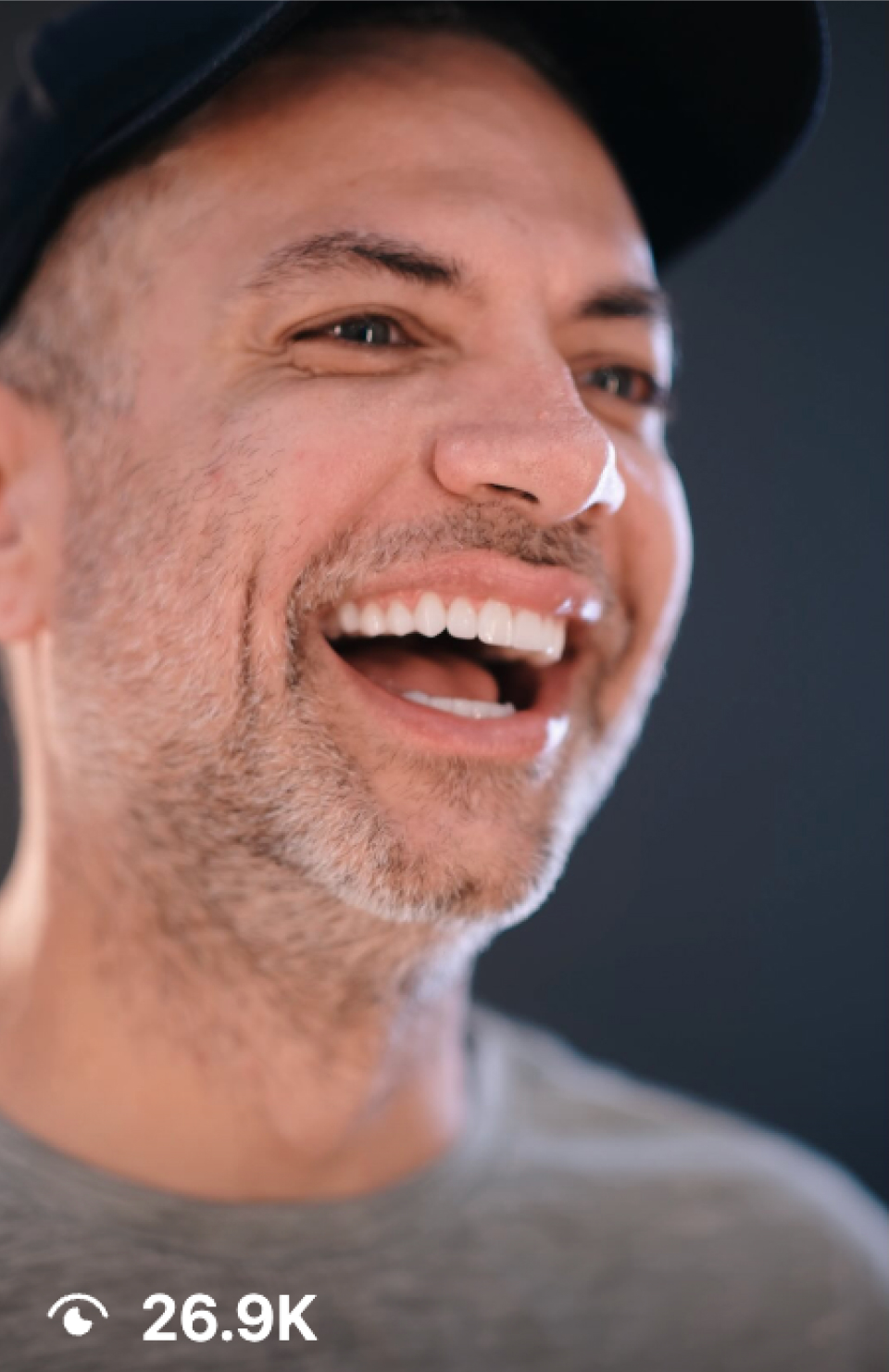Table of content
Table of content
Overbite Solutions
The question of whether clear aligners can fix an overbite comes up often—and the answer is yes! Clear aligners are one of the many options available, and they are designed to correct both mild and severe overbites, allowing you to smile confidently and enjoy your favorite foods.
But how do they actually work? How long does the treatment take? And how do clear aligners differ from typical metal braces? In this post, you will find out everything you need to know about clear aligners and their corrective capabilities.
What is an Overbite?
An overbite refers to an orthodontic situation where the upper front teeth cover a large portion of the lower front teeth when the mouth is closed.
While this anomaly might not seem like a big deal at first, over time, if left untreated, it can lead to some real problems like:
• Difficulty eating
• Jaw pain
• Headaches
• Changes in appearance and smile
• Deformed jawline
• Sleep apnea
• Difficulty speaking
• Worn tooth enamel
Overbite can be classified as mild or excessive. A mild overbite is when the upper and lower teeth overlap by about 2-4 mm, while an excessive overbite is when the upper teeth extend 4-6 mm or more over the lower teeth. Excessive overbites may require orthodontic correction to prevent potential dental issues.
Cause of Overbite
An overbite (also known as buck teeth) can develop due to a number of factors, including, but not limited to:
• Thumb sucking (After the age of 3 or 4)
• Genetics
• Excessive nail biting
• Teeth grinding (Bruxism)
• Misaligned jaw growth
• Tooth loss without replacement
• Chewing on pencils and other items
Using Clear Aligners to Fix an Overbite: The Procedures
Clear aligners are custom-made, removable, and nearly invisible plastic trays that can correct bite issues like overbites.
Unlike traditional braces, which use metal brackets and wires, clear aligners come in sets of custom-made trays that fit over your teeth, covering both the upper and lower arches. Here’s a step-by-step breakdown of how it works!
Initial Consultation with Your Dentist:
You cannot fix an overbite on your own, and it won’t correct itself over time!
If you notice your misaligned teeth causing discomfort, the first step is to visit a dental clinic specializing in clear aligner treatments. Your orthodontist will take a digital scan of your mouth and create a unique treatment plan, outlining how each set of aligners will gradually shift your teeth into balance.
Clear Aligner Creation:
After the digital scan and treatment plan, the next step is for your dentist to create your custom clear aligners. Using advanced 3D printing technology, your dentist will craft aligners that fit your teeth perfectly.
Typically, this process takes about 4 weeks, but some clinics offer same-day aligner creation for eligible patients.
Wearing the Aligners:
For clear aligners to work as intended, they should be worn for at least 20 to 22 hours a day.
Another benefit of clear aligners? They are removable! This means you can take them out while eating, drinking anything other than water, or brushing your teeth.
Regular Checkups with Your Dentist:
Throughout your treatment, it is essential to maintain regular checkups every one to two weeks to ensure everything is on track. During your visits, your dentist will monitor your progress, make adjustments as needed, and replace old trays with new ones as your teeth gradually shift into place.
How Long Does It Take to Fix an Overbite with Clear Aligners?
The time it takes to fix an overbite with clear aligners varies. A mild overbite typically takes 6 to 12 months, while more severe cases may take 12 to 24 months, depending on how consistently you wear your aligners.
Factors influencing treatment time include:
- Age: Younger patients often heal faster due to their more adaptable jawbone.
- Severity of the Overbite: Mild cases take less time to correct, while more complex cases take longer.
- Consistency: Wearing your aligners as directed (20-22 hours a day) ensures optimal results.
What Differentiates Braces from Clear Aligners?
Clear aligners and traditional metal braces can both correct an overbite, but they differ in their application and appearance:
- Appearance: Metal braces are noticeable due to their metal brackets and wires, while clear aligners are nearly invisible.
- Comfort: Clear aligners use smooth plastic trays, which are gentler on the gums and teeth compared to the brackets and wires of metal braces.
- Effectiveness for Overbites: While metal braces can address overbites of any severity, clear aligners are most effective for mild to moderate cases.
Conclusion
So, can clear aligners fix an overbite? The answer is a resounding yes! Clear aligners are specially designed to correct mild to moderate overbites by gradually moving the overlapping teeth back to their proper position.
They can also correct severe overbite, although this may require additional attachments like elastics (rubber bands) and, in some cases, additional procedures like tooth extractions and jaw surgery.
Since clear aligner trays are made of smooth plastic, they’re comfortable to wear! Additionally, they are nearly invisible, meaning that you can have your teeth straightened without anyone noticing!
That being said, if you are looking for same-day, quality, and cost-effective treatment, many clinics offering clear aligner treatments provide cutting-edge technology, including options like Invisalign, which offers unique benefits over other clear aligners.
At the end of the day, clear aligners provide a convenient and effective way to fix overbites and other bite issues—helping you achieve a confident, healthy smile.
















 70%
70% 

